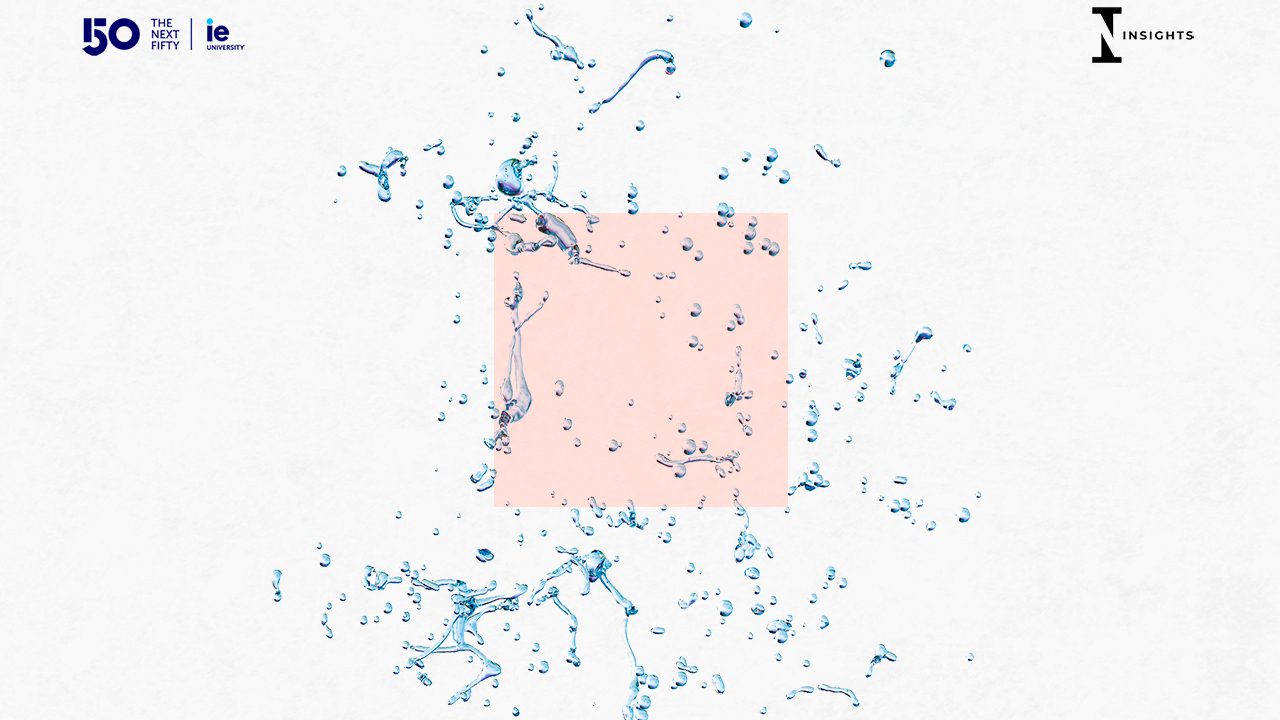Link copied
IE insights - IDEAS TO SHAPE THE FUTURE - Society

Water: A Journey to the Border Between Utopia and Dystopia
We live a dual reality: a journey to stark water scarcity or a future in which no citizen will lack access to the most basic of resources.
As you read this, young girls in the village of Katra (Uttar Pradesh, India), belonging to a lower caste, crampingly wait after dusk or right before dawn to go to the fields to relieve themselves. One day after another, they go in pairs to ravines and other isolated places to practice open defecation. Some of them are then gang-raped and murdered. Despite the claim in 2019 of having eradicated open defecation, 21% of rural households in the country still lack access to safe, private toilets.
384,400 km from there, on the Moon, all is covered in water and still our natural satellite is 100 times drier than the Sahara Desert. In 2020, data from NASA’s SOFIA mission confirmed that water exists in the sunlit area of the lunar surface (maybe also beyond) – molecules were found embedded, or even sticking to the surface of, grains of lunar dust. Small water ice deposits may not only provide water for future astronauts to drink, but water molecules can also be broken apart into their constituent hydrogen and oxygen atoms, thus allowing astronauts to breathe and providing an energy supply source. USA and China currently competing for those water resources.
Over the past 40 years, the world’s population has doubled; water use has quadrupled. In 2050, increased population will result in a 19% increase in agricultural water consumption in order to ensure long-term food security for circa 9.6 billion inhabitants. Overall water demand is projected to grow by 55% by 2050 (including a 400% rise in water demand for manufacturing). The global urban population facing water scarcity is projected to double from 930 million in 2016 to 1.7–2.4 billion people in 2050. This challenge is compounded by water quality degradation, since 90% of sewage in developing countries (80% on average worldwide) is discharged directly into water bodies.
We live a dual reality, a journey to the border between dystopia and utopia, to the heart of darkness or the blinding light of a future in which no citizen will lack access to water.
Somewhere between Uttar Pradesh and the South Pole of the Moon, AI is seemingly getting us closer to utopia, through predictive maintenance for water supply, future flood and drought risk prediction, analyzing water quality patterns, optimizing energy usage in water treatment and distribution (thus reducing costs and carbon emissions), managing infrastructure assets and water resources. Microsensors provide us with real-time information on our consumer profiles, distributed ledgers of information allow for accountable water use right trades, digital twins pave the way for the simulation of different scenarios, IoT speeds up data transfer… Yet, none of these technologies would deliver in the absence of new mindsets and redesigned incentives.
The daily strive for dignity of women in Uttar Pradesh and Dhaka and Lagos and the periphery of Lima or the suburbs of Nairobi… is not a symbol of the failure of new technologies, let alone the lack of financial resources. Rather, deprivation and violation of human rights to water and sanitation are explained by deep gaps in sound water governance, which not only needs to be transparent and accountable and full of integrity and meaningfully engaging stakeholders, but should also address the redesign of incentives, sectoral policy coordination, or the uptake of innovation.
Richard Feynman, Nobel Prize Laureate in Physics, 1965, once said: “It is much more valuable to imagine what exists than to imagine what does not exist.”
© IE Insights.
